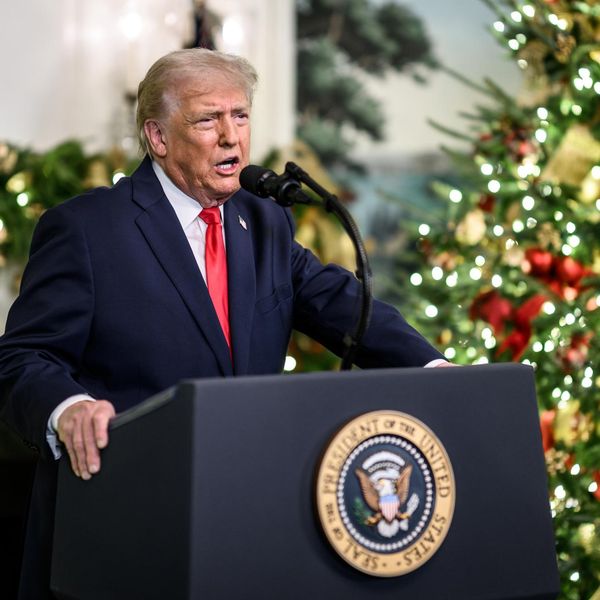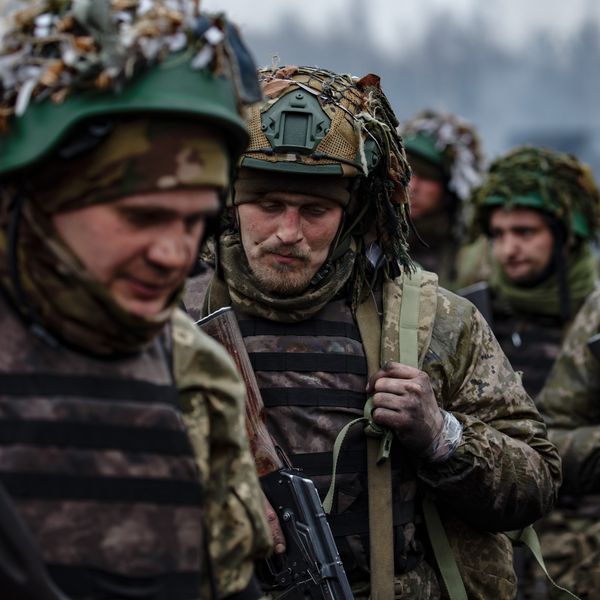Nearly two decades after al-Qaida attacked the United States on September 11, 2001, the national security establishment is ready to rethink and recalibrate the war against terrorism. A gradual shift in allocating resources and policy attention to other strategic concerns has occurred for a number of reasons, but among the most important is the question of whether the heavily militaristic approach has simply proven ill-suited to the nature of the threat. There may be merit in reducing the centrality of terrorism as the organizing principle of U.S. engagement overseas, as the threat and climate of fear from the 9/11 attack have gradually receded.
The initial response to the al-Qaida attacks on the U.S. homeland was led by intelligence assets, not conventional military forces. The CIA’s work with the northern alliance of Afghan militia was the dramatic opening round of the campaign to defeat al-Qaida and to remove the Taliban from power in Kabul. But within short order, the U.S. war in Afghanistan turned into a protracted counterinsurgency campaign, battling domestic foes of the government in Kabul as well as Al-Qaida fighters of various nationalities who found safe haven in Pakistan.
U.S. diplomats and military commanders struggled to find coherence in policy objectives that sought to strengthen government institutions, promote reconciliation, and destroy Taliban fighters and their terrorist associates. Negotiations in 2019 between the U.S. and the Taliban, intended to lead to inter-Afghan peace talks, were interrupted by President Trump, and appear to be beyond repair. The Afghan government, with outside help, has worked to improve basic public services, but corruption is rampant, and its legitimacy fragile.
The Afghan campaign will be studied by historians for the profound disconnect between ends and means. The Washington Post estimates that 775,000 troops from the U.S. Armed Forces have deployed to Afghanistan since 2001. The U.S. military presence in 2001 was just over one thousand and; it peaked in 2010 at 100,000 in theatre, and at present is around 15,000. Since 2001, approximately 2,400 Americans have died and over 20,000 sustained injuries during their deployments. A 2018 Stimson Center report estimates that Defense Department spending for counterterrorism peaked at $189 billion in discretionary spending in 2008, the year of highest spending. Government wide, the report estimates that from 2002-2017, the U.S. spent $2.8 trillion on counterterrorism, the bulk for the Department of Defense and about a quarter for the Department of Homeland Security.
The war on terrorism was not contained in Afghanistan. President George W. Bush’s war of choice against Iraq caused the threat to migrate with the U.S. forces, which occupied Iraq from 2003 to 2011. Al-Qaida in Iraq eventually split, when more radical, violent and ambitious forces created the Islamic State. By 2014, their control of significant amounts of territory in Syria and Iraq brought U.S. forces back to support Iraqi and Syrian troops. By 2018, the Islamic State’s caliphate had lost its territory, but remained committed to its cause and spread its assets or inspired followers across the Middle East, parts of South Asia, and the Sahel.
U.S. commanders have acknowledged publicly the limits to military power in addressing the profound challenge of extremism, and some have been honest enough to recognize that the dominance of military power in the U.S. approach creates a counterproductive dynamic, as killings and property destruction by U.S. forces against suspects risks radicalizing even more people, and helping terrorist groups recruit new cadres. The military will be haunted by the outcome of this longest war in U.S. history, seeking lessons for military doctrine and training.
The Obama administration embraced the idea that a more civilian-centric approach was needed. The president announced a new, more comprehensive strategy at the U.N. General Assembly in September 2014, and hosted the first Countering Violent Extremism (CVE) summit in early 2015. Congress codified the establishment of a new CVE office in the Department of Homeland Security, and the State Department renamed its counterterrorism office as the Bureau of Counterterrorism and Countering Violent Extremism. Once the bureaucratic momentum was created, CVE became the new bumper sticker for a wide swath of programmatic activity. USAID and State Department programming often provided CVE rationales for anything from educational reform to democracy training to basic economic development.
As a 2016 Brookings Institution report noted, CVE as the inclusive framework for the war on terrorism had a number of limitations. First, there was conceptual confusion about the causes and drivers of extremism. Did the bureaucracy need to study the problem more, before it could embark on an ambitious reframing of U.S. engagement in the Middle East and Africa? And second, CVE caused friction in U.S. relations with Muslim societies and states, who viewed it as failing to find a more positive way to interact with the overwhelming majority of Muslim citizens who were not violent or extremist.
The Trump administration has dropped CVE as a policy paradigm, and its 2017 National Security Strategy moved the center of gravity for national security focus to the great geopolitical contests with Russia and China. Terrorism has dropped to a second tier priority. The current administration has also begun to implement sharp drawdowns of U.S. forces in terrorism-affected areas, from the dramatic policy shift in Syria to a more gradual phasing out of training programs by the African Command working with the states of the Sahel, also threatened by al-Qaida, the Islamic State and other terrorist groups.
Terrorism cannot be eliminated by military action by an outside power, nor do diplomacy and development aid seem the right fit for the long-term, generational challenge of preventing extremism in states with poor governance. But each time U.S. policy lurches to a new strategy, such as short term surges in military operations against violent groups in Iraq (2006) or Afghanistan (2010), or rebranding much of U.S. civilian programming in Muslim societies as CVE, the outcomes are disappointing, and the costs—direct or indirect—are quite high. Abrupt shifts are also risky, creating new vacuums of power or destabilizing relations with partners who want American attention and support.
Overall, the trend line may be moving in the right direction, to put the terrorist threat in its proper context and perspective. Less reliance on military force and triumphant discourse to defeat and destroy terrorists, and more subtle use of prevention tools in diplomacy and development programs, may prove more effective and more efficacious in the long run.
















